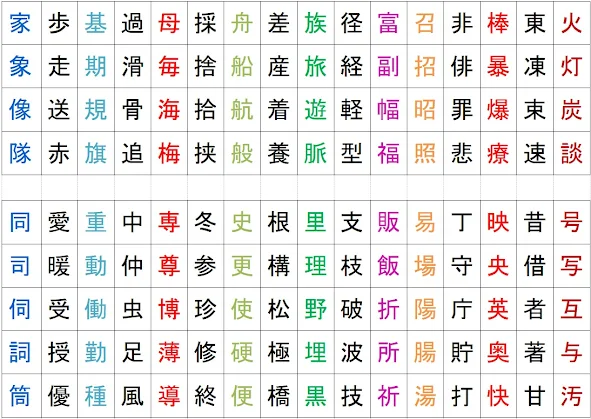I have been trying to organize and categorize the 常用漢字 (Jōyō Kanji) based on their form, structure, and so on. A few of my friends referred to this activity as tedious. They inquired whether there is any reasoning for doing this.
Japanese children practice Kanji by writing them over and over. Continuous practice is essential for retaining Kanji characters. For numerous working foreigners, who lack sufficient time for study, this iterative learning technique may not be feasible. This understanding motivated me to organize the Kanji according to their structure.
What have I done?
What I did was straightforward; I merely organized the Kanjis that appeared similar to me at first glance.
What made me do this?
I had trouble recalling the Kanjis that appeared alike. They left me feeling confused. Numerous Kanji appear alike, yet they possess distinct meanings and pronunciations. The slight disparity between them ranges from a mere dot or line to the connection of radicals.
How did I do?
I have a compilation of all the Kanji in an Excel spreadsheet. There was a column containing a list of Kanji. I relocated the Kanji that were completely dissimilar in appearance to their respective columns and began searching for Kanji resembling that initial Kanji. Eventually, I received a table of Kanji arranged in columns. I subsequently organized them based on their appearance. The simpler ones are at the top, while the more complicated ones are at the bottom.
Here are some samples:
I am not sure about the actual effect of this method in memorizing the Kanji for others, but it significantly assisted me (when I prepared for JLPT test) in distinguishing between kanji that appear alike yet have different meanings and pronunciations. I would appreciate your thoughts in the comment section.









